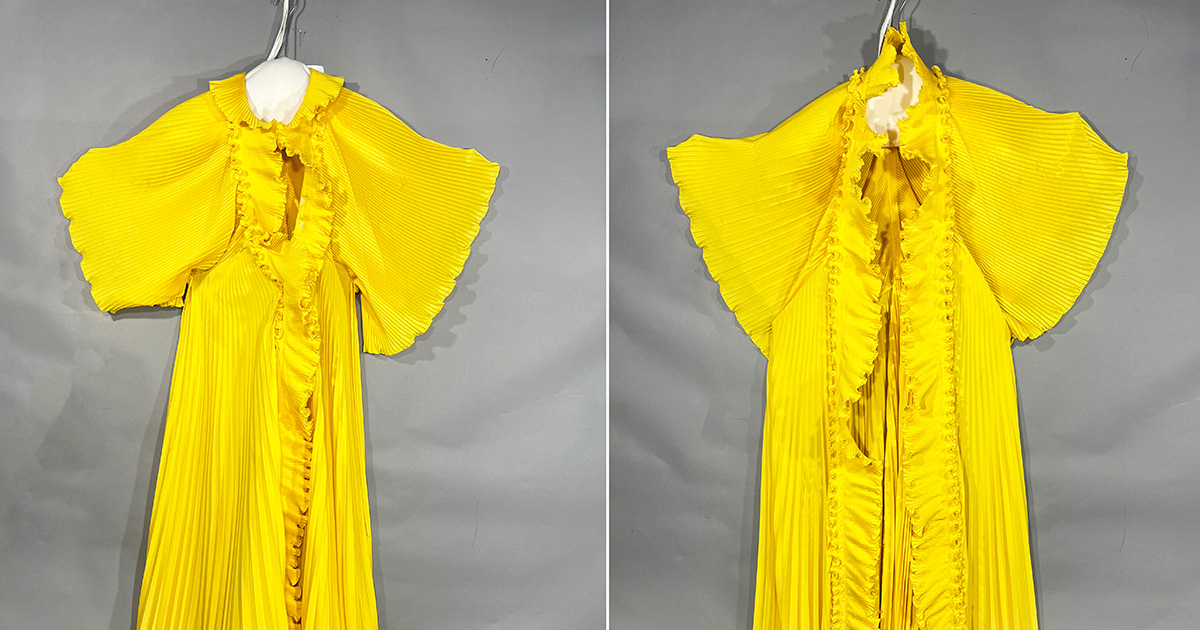- Events & Programs Home
- Calendar
- Accessibility
- Adults
-
Families & Teens
- Families & Teens Home
- 10x10 Teen Art Expo
- Art on the Rise
- Art Together: Art Making for Families with Children Ages 3–5
- Babies Sing with May Festival Minis
- Boy Scouts / Girl Scouts
- CAM Kids Day
- Family Storytime and Gallery Walk
- Family Studio: Art Making for Families with Children Ages 6–12
- Games in the Galleries
- Members-Only Baby Tours
- Public Baby Tours
- REC Reads
- Rosenthal Education Center (REC)
- Saturday Morning Art Class
- See Play Learn Kits
- Summer Camp
- Teen Fest: Zine and Comic Exchange
- RECreate
- Teachers
- Community Outreach
- Fundraisers
- Plan Your Own Event

- Events & Programs Home
- Calendar
- Accessibility
- Adults
-
Families & Teens
- Families & Teens Home
- 10x10 Teen Art Expo
- Art on the Rise
- Art Together: Art Making for Families with Children Ages 3–5
- Babies Sing with May Festival Minis
- Boy Scouts / Girl Scouts
- CAM Kids Day
- Family Storytime and Gallery Walk
- Family Studio: Art Making for Families with Children Ages 6–12
- Games in the Galleries
- Members-Only Baby Tours
- Public Baby Tours
- REC Reads
- Rosenthal Education Center (REC)
- Saturday Morning Art Class
- See Play Learn Kits
- Summer Camp
- Teen Fest: Zine and Comic Exchange
- RECreate
- Teachers
- Community Outreach
- Fundraisers
- Plan Your Own Event
Blog: CAM Uncovered
Blog: CAM Uncovered
- Home
- Plan Your Visit
- Art
-
Events & Programs
- Events & Programs Home
- Calendar
- Accessibility
- Adults
-
Families & Teens
- Families & Teens Home
- 10x10 Teen Art Expo
- Art on the Rise
- Art Together: Art Making for Families with Children Ages 3–5
- Babies Sing with May Festival Minis
- Boy Scouts / Girl Scouts
- CAM Kids Day
- Family Storytime and Gallery Walk
- Family Studio: Art Making for Families with Children Ages 6–12
- Games in the Galleries
- Members-Only Baby Tours
- Public Baby Tours
- REC Reads
- Rosenthal Education Center (REC)
- Saturday Morning Art Class
- See Play Learn Kits
- Summer Camp
- Teen Fest: Zine and Comic Exchange
- RECreate
- Teachers
- Community Outreach
- Fundraisers
- Plan Your Own Event
- Give & Join
- About
- Tickets
- Calendar
- Exhibitions
- Collections
- Blog
- Shop
Behind the Scenes in Conservation: Jacquard Loom Blanket
by Obie Linn, Associate Conservator of Textiles
4/27/2023
CAMConservation , textile conservation , jacquard , american coverlets , delaware ohio
Does crisp spring weather make you crave a snuggly blanket? The Cincinnati Art Museum has several! You might not think of blankets as “art,” but this cotton coverlet is one of coverlets currently in the collection. If the double-woven structure and cotton and wool yarns seems familiar, it could be because this art form continues today, maintaining a tradition that first flourished in the mid- 1800s. These textiles were created using a “jacquard loom” that used punch cards to operate the loom. The jacquard loom is often cited as one of the first modern computers for translating a sequence of complex steps into a binary language: “punched hole” or “no hole” for the loom, ones and zeros for computers.
We brought this example to the textile conservation lab to upgrade its method of storage. The coverlets are all stored rolled around a rigid, cardboard tube; this one received a new archival tube and fresh tissue paper interleaving between the roll layers in addition to a final exterior wrap in clean muslin and plastic sheeting to protect it in storage. Rerolling also provided a good opportunity to upgrade another aspect of collection care: documentation. We took photographs, measurements, and notes on its condition and entered all the information in the museum’s collection database.
Several coverlets underwent care, but this one stands out for its woven “signature” with a date and place of its “birth”: Gabriel Rausher, May 10, 1850, Delaware, Ohio. This coverlet’s 173rd birthday is coming up!
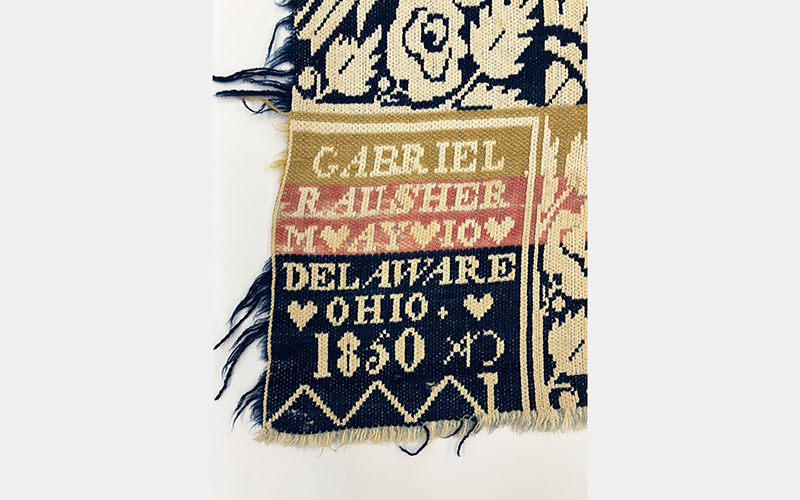
Gabriel Rausher (American, 1804-1865), Coverlet, 1850, cotton, wool, Gift of Mr. and Mrs. Henry A. Duebel, 1976.169
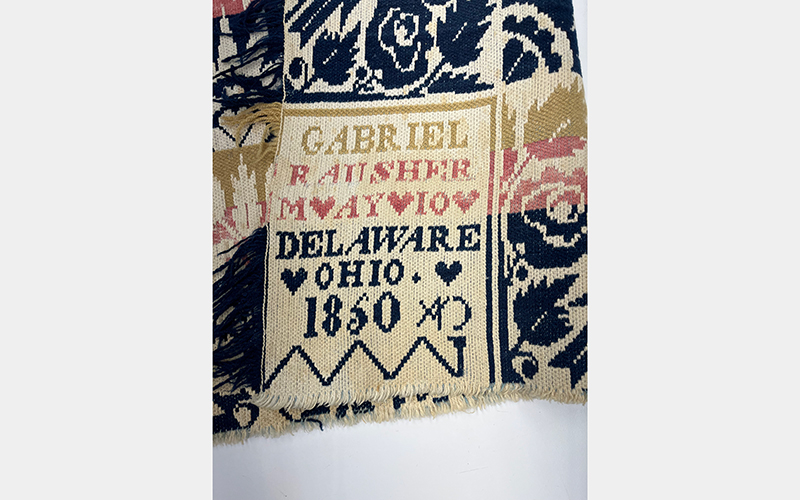
Gabriel Rausher (American, 1804-1865), Coverlet, 1850, cotton, wool, Gift of Mr. and Mrs. Henry A. Duebel, 1976.169
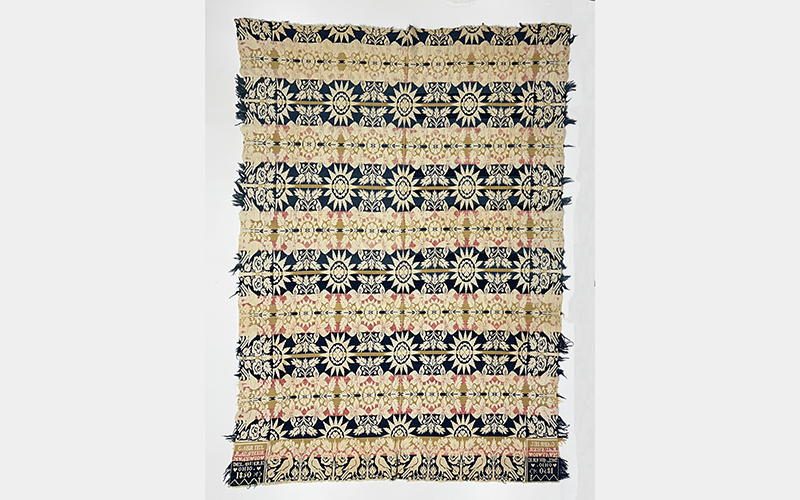
Gabriel Rausher (American, 1804-1865), Coverlet, 1850, cotton, wool, Gift of Mr. and Mrs. Henry A. Duebel, 1976.169
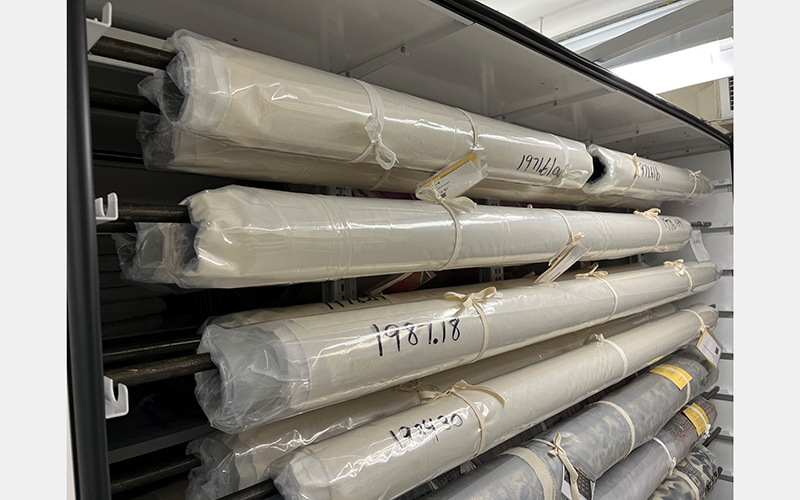
Finished rolls in storage.
Related Blog Posts

Cincinnati, OH 45202
Toll Free: 1 (877) 472-4226
Museum Hours
Museum Shop
Terrace Café
Library
Cincinnati Art Museum is supported by the tens of thousands of people who give generously to the annual ArtsWave Campaign, the region's primary source for arts funding.

Free general admission to the Cincinnati Art Museum is made possible by a gift from the Rosenthal Family Foundation. Exhibition pricing may vary. Parking at the Cincinnati Art Museum is free.
Generous support for our extended Thursday hours is provided by Art Bridges Foundation’s Access for All program.

General operating support provided by:



